One of the earliest tombstone symbols in the United States is the Death’s Head. Also known as the “winged skull,” it pertains to life and death, depicting the soul’s voyage through death. Puritans began to emigrate to New England around 1620 with strong religious beliefs and little adornment–idolatry was abhorrent to them. Their gravestones started with wood and evolved to plain slate tablets until death’s head made its appearance in 1678 by the “Stonecutter of Boston.” Also known as “The Old Stonecutter,” and the “Charleston Stonecutter” he is credited with starting major artistic changes to New England tombstones as well as developing the death’s head symbol. (1)AL
Symbolism consisted mainly of reminders of our mortality sometimes accompanied by Latin phrases with more of the same. As Puritanism declined, the winged cherub, with its friendly, human face became more common. An occasional bird, peacock and floral motif appeared, but were less common. Portraits and Coat of Arms became popular in the eighteenth century. Just before the turn of the nineteenth century, symbols of mourning rather than mortality became popular–drapery, the willow and the urn made their appearance. Below are the more common symbols in New England cemeteries prior to 1800.
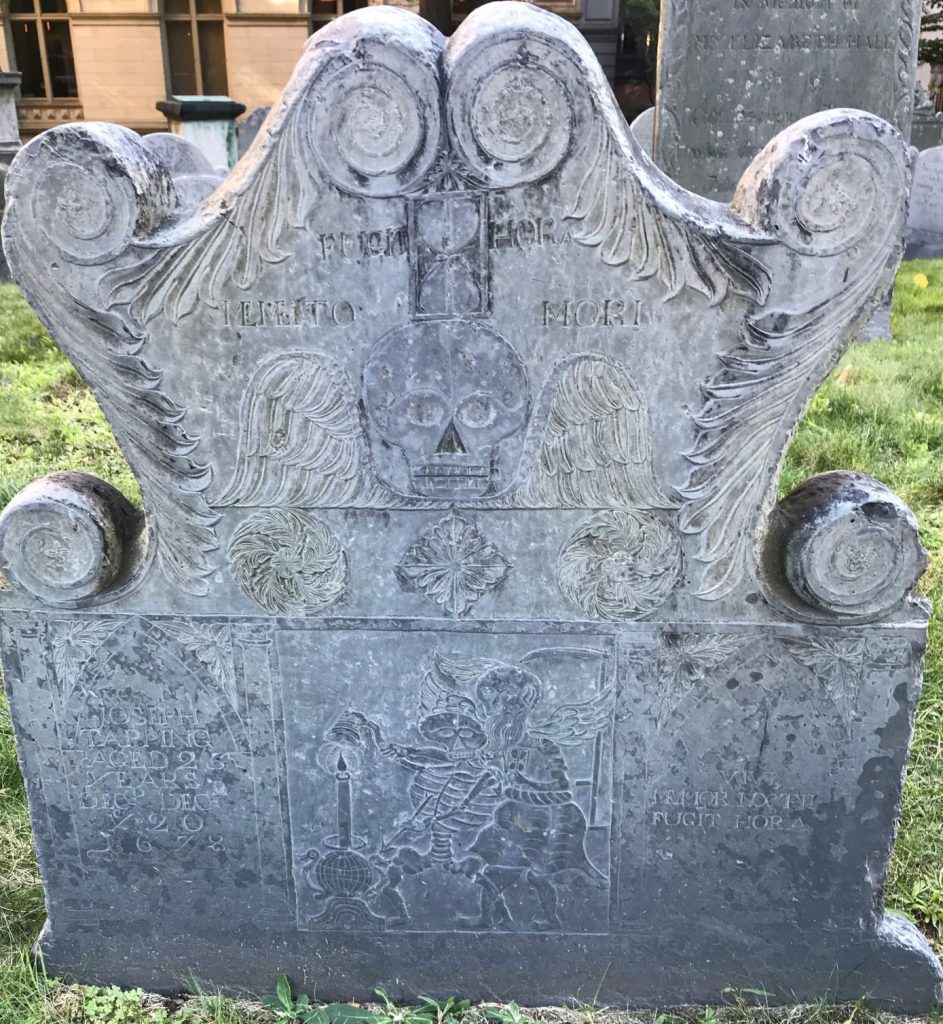
Joseph Tapping, King’s Chapel Burial Ground, Boston, Massachusetts
Tapping’s gravestone marks the first appearance of a scroll topped stone, the first appearance of an allegory in New England, and an early appearance of Death’s Head.
Source: Allan Ludwig, Graven Images, p295.
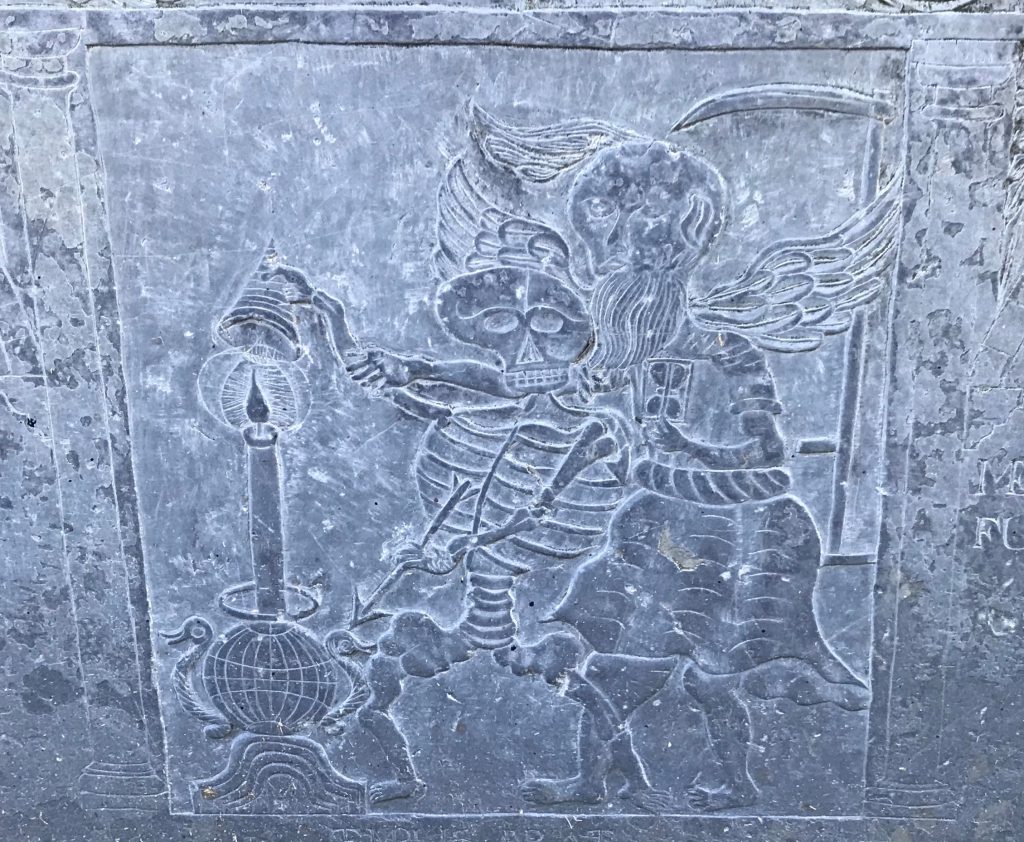
Arrow or Dart of Death
This close up of the Joseph Tapping stone in King’s Chapel Burial Ground depicts the skeleton, representing death, holding an arrow or dart of death as he extinguishes life–the candle.
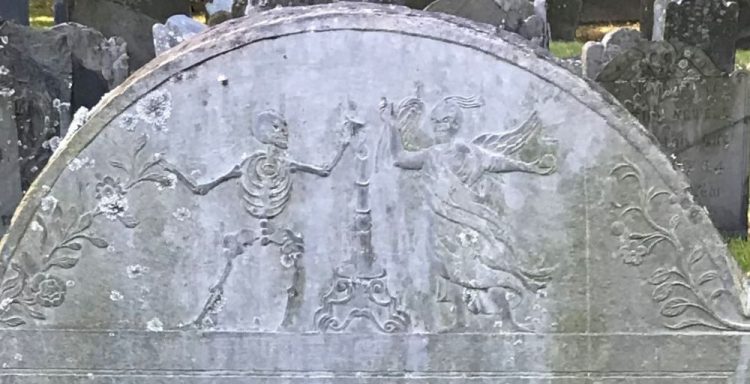
Candle
The candle represents life. The skeleton snuffing the candle represents death.
King’s Chapel Burial Ground, Boston, Massachusetts
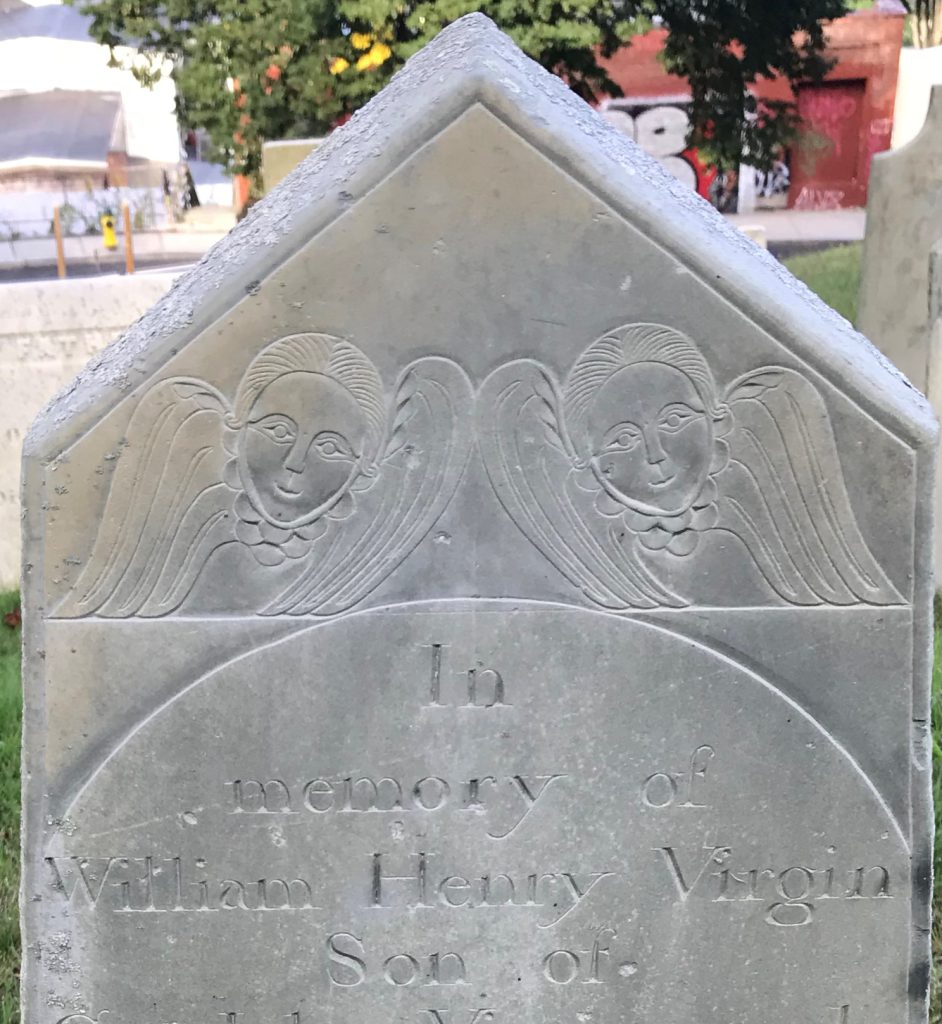
Cherub, Winged Cherub or Soul Effigy
Soul’s flight to heaven–the friendly version of Death’s Head.
William Henry Virgin, d. 1796, Burial Hill, Plymouth, Massachusetts
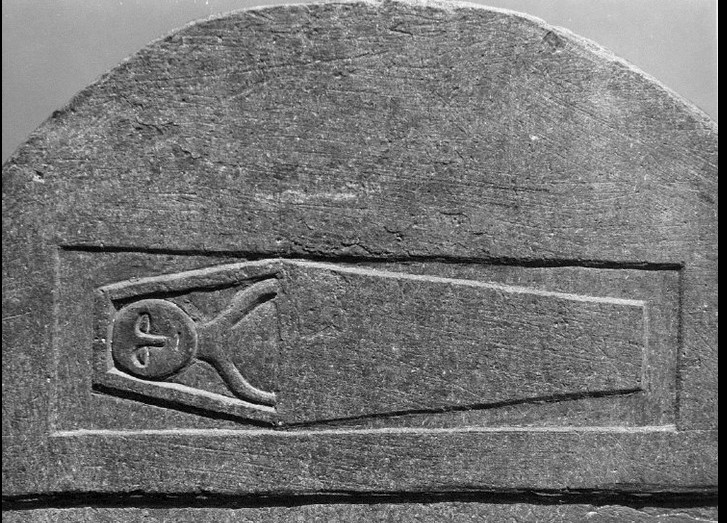
Coffin
This coffin symbolizes mortality–the inevitable ending, on the tombstone of Nancy Ashely (1778-1779) in the old Deerfiled Burying Ground in Deerfield, Massachusetts.
Courtesy American Antiquarian Society
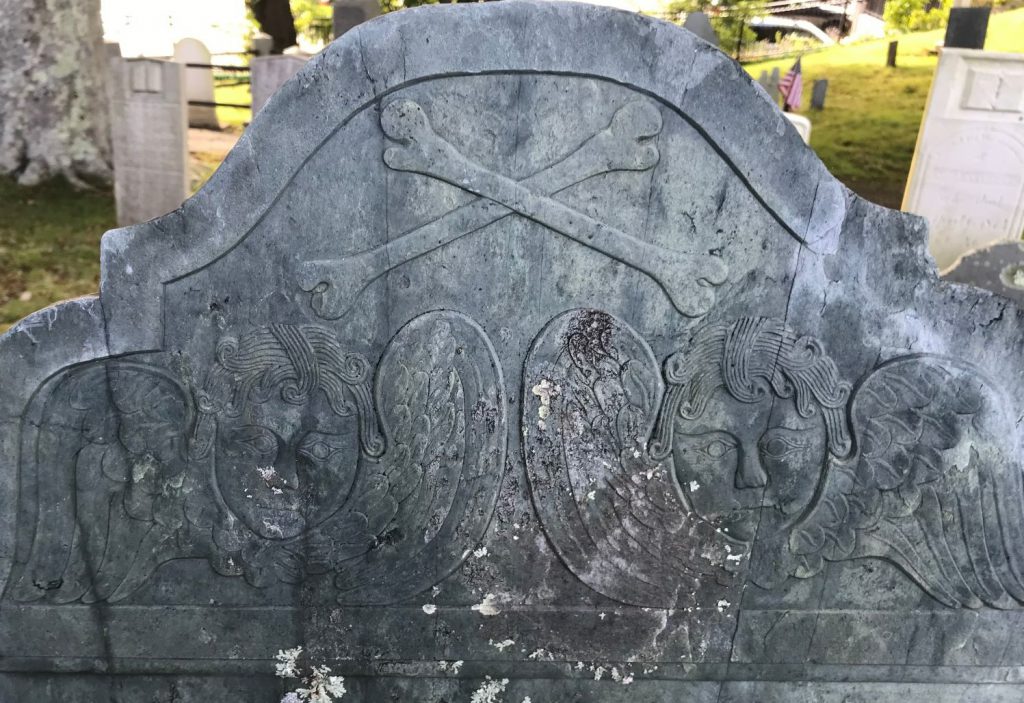
Cross Bones
Burial Hill, Plymouth, Massachusetts
A symbol of Memento Mori–Remember that you will die. The Puritans believed that contemplation of one’s mortality was good for the soul.
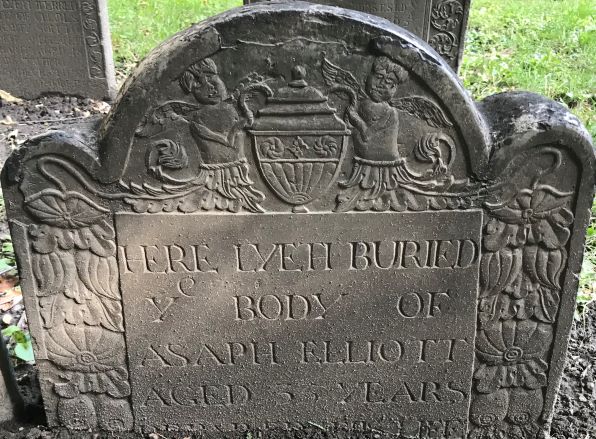
Dagan, Merman, Mermaid, Triton
The Dagan resembles a Merman or Triton. The female versions or Mermaid/Nereid have longer hair. A Massachusetts carver identifying himself as “J.N.” introduced the merfolk in the late 1600’s.
Harriette Forbes in Gravestones of Early New England, p122, suggested that the merfolk, being half human and half fish, represent the close of a Christian life; the last step in our terrestrial journey.
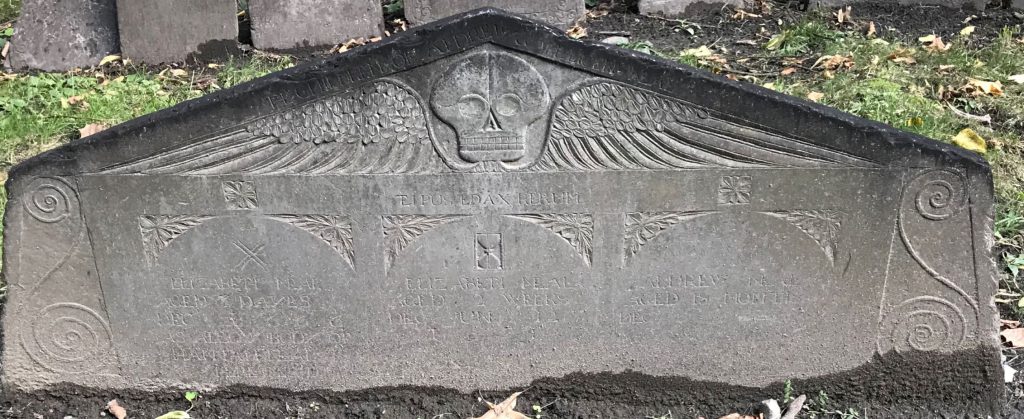
Death’s Head
One of the first symbols to appear on gravestones in the United States, the death’s head is a symbol of mortality. It depicts the soul’s voyage through death.
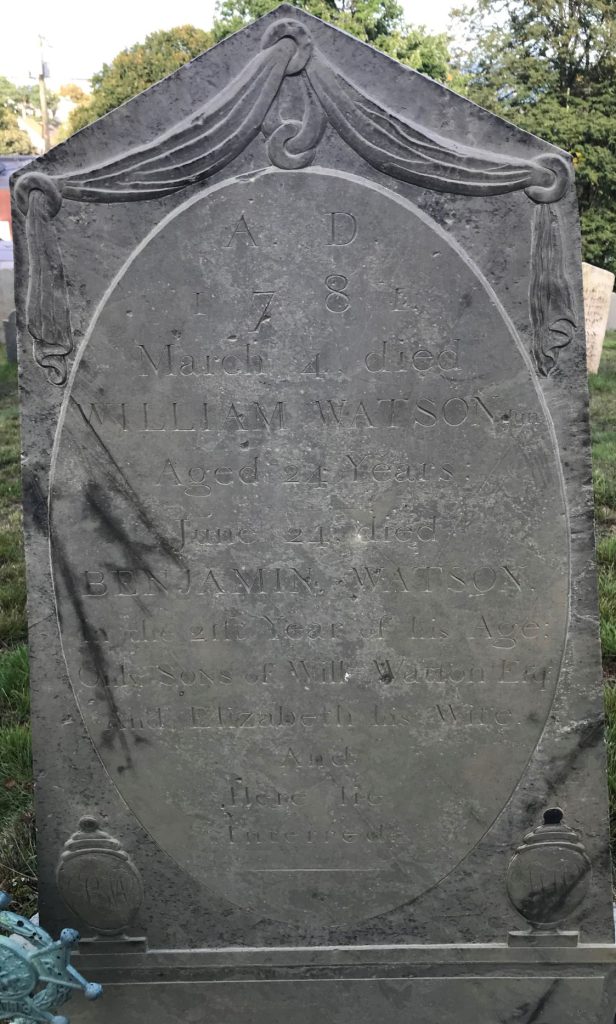
Drapery
Revolutionary soldiers William and Benjamin Watson died in 1781. Their tombstone is adorned with drapery, a symbol of mourning.
Burial Hill, Plymouth, Massachusetts

Father Time
Father Time, also known as the Grim Reaper, represents time — as in time is up. He is frequently depicted with an hourglass and/or a scythe.
Kings Chapel Burial Ground, Boston, Massachusetts

Grapes and Corn
Christian symbol for the blood and body of Christ.
Rebecca Gerrish, King’s Chapel Burying Ground, Boston, Massachusetts
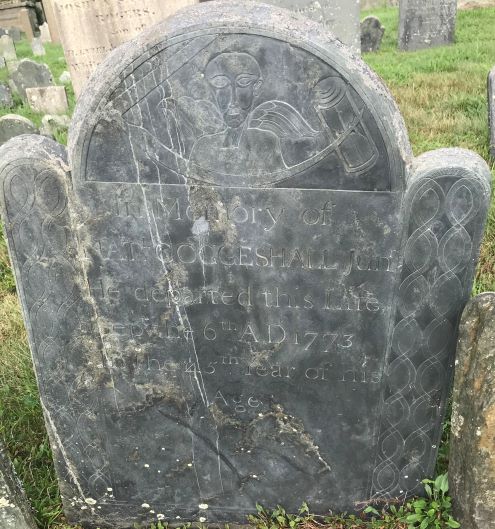
Hourglass, Winged Hourglass
The hourglass is a reminder of time — time is up, and with the winged hour glass, time flies.
Natl Coggeshall, d. 1773, Common Burying Ground, Newport, Rhode Island
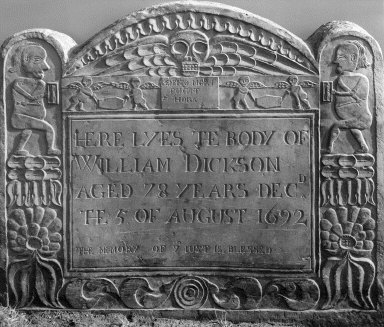
Imps
The Imps of Death carry darts of death and an hourglass symbolizing death.
William Dickson, d. 1692, Cambridge, Massachusetts.
Courtesy American Antiquarian Society
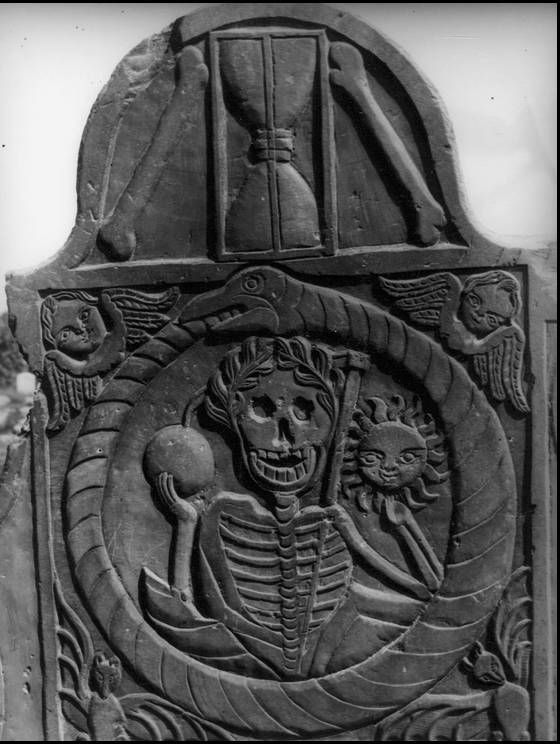
Ouroboros
The snake with its tail in its mouth is a symbol of death and rebirth. This tombstone was carved by Boston’s Henry Christian Geyer and is full of symbolism. An hourglass with cross bones fill the tympanum, two cherubs grace the corners above the Ouroboros and two evil bats are at the bottom corners. The skeleton (death) has a laurel crown, indicating victory. He holds the earth and the sun.
Susanna Jayne (1732-1776), Old Burial Hill Cemetery, Marblehead, Massachusetts
Courtesy American Antiquarian Society
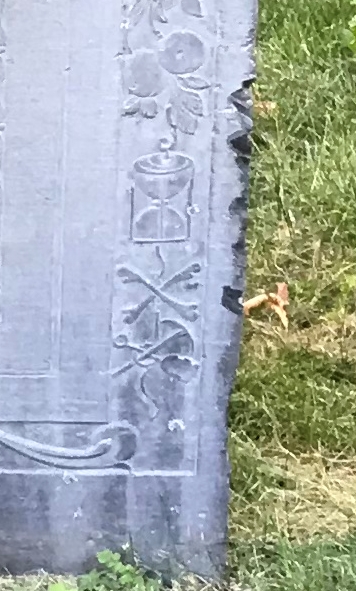
Pick and Shovel
The Pick Axe and Shovel, gravedigger tools, represent mortality.
Rebecca Gerrish, King’s Chapel Burying Ground, Boston, Massachusetts
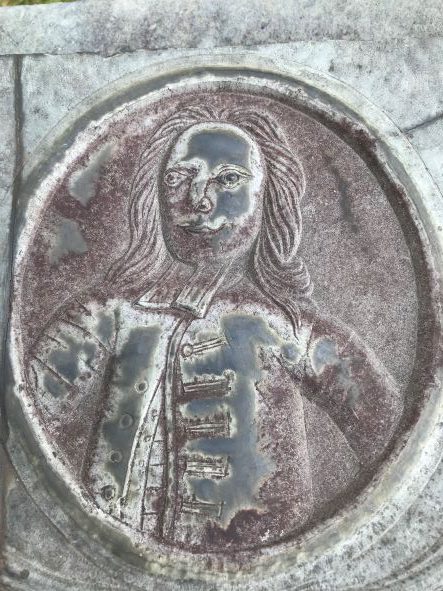
Portraits
Rev. Grindall Rawson (1659-1715), Old Cemetery, Mendon, Massachusetts
This is thought to be the first extant attempt at portraiture in New England and was probably carved by William Codner (1709-1769).
Portraits were not necessarily a portrait of the person interred. Grindall Rawson was my eighth great grandfather.
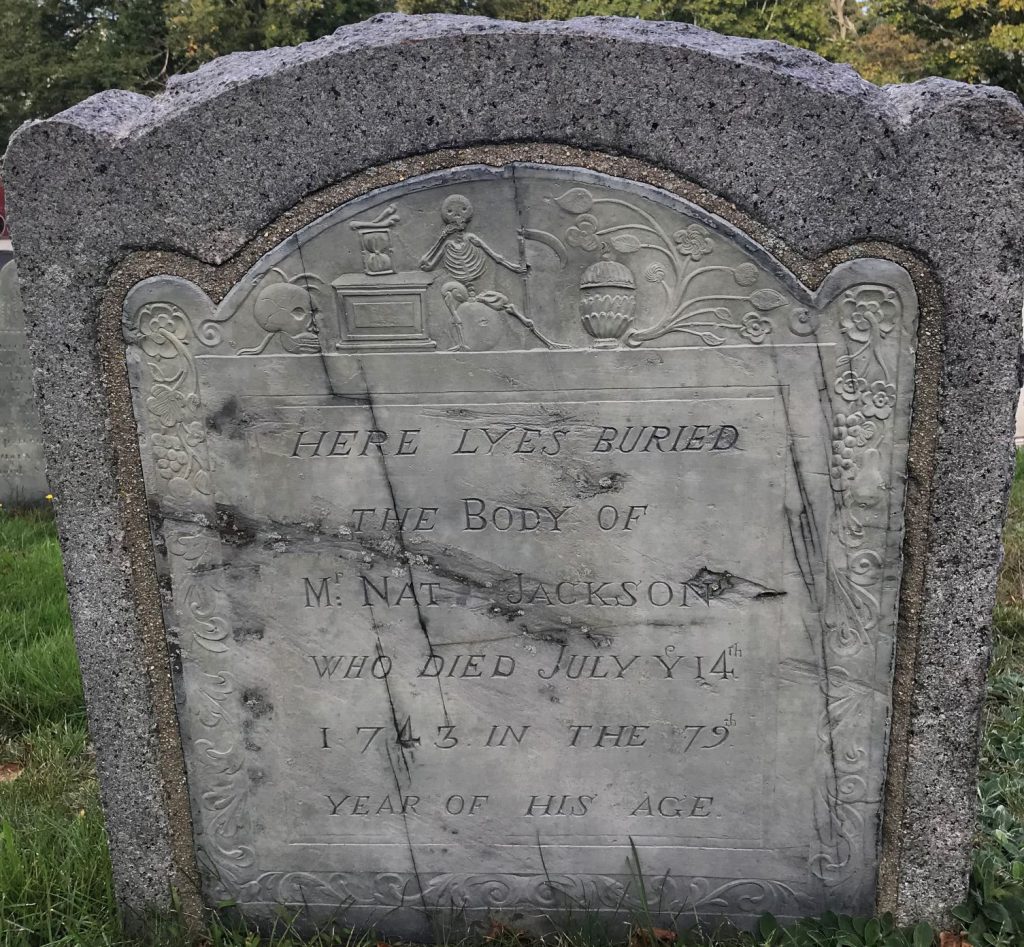
Scythe
The scythe represents the grim reaper. The skeleton on this tombstone represents death and the scythe the tool for harvesting.
Nathaniel Jackson, d. 1743, Burial Hill, Plymouth, Massachusetts
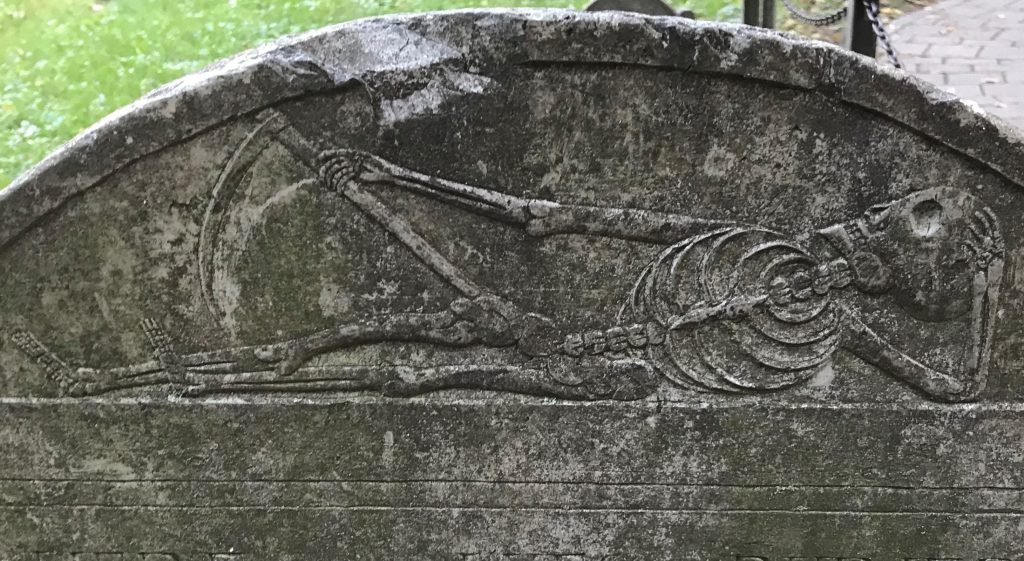
Skeleton
The skeleton represents death.
The Granary Burial Ground, Boston, Massachusetts
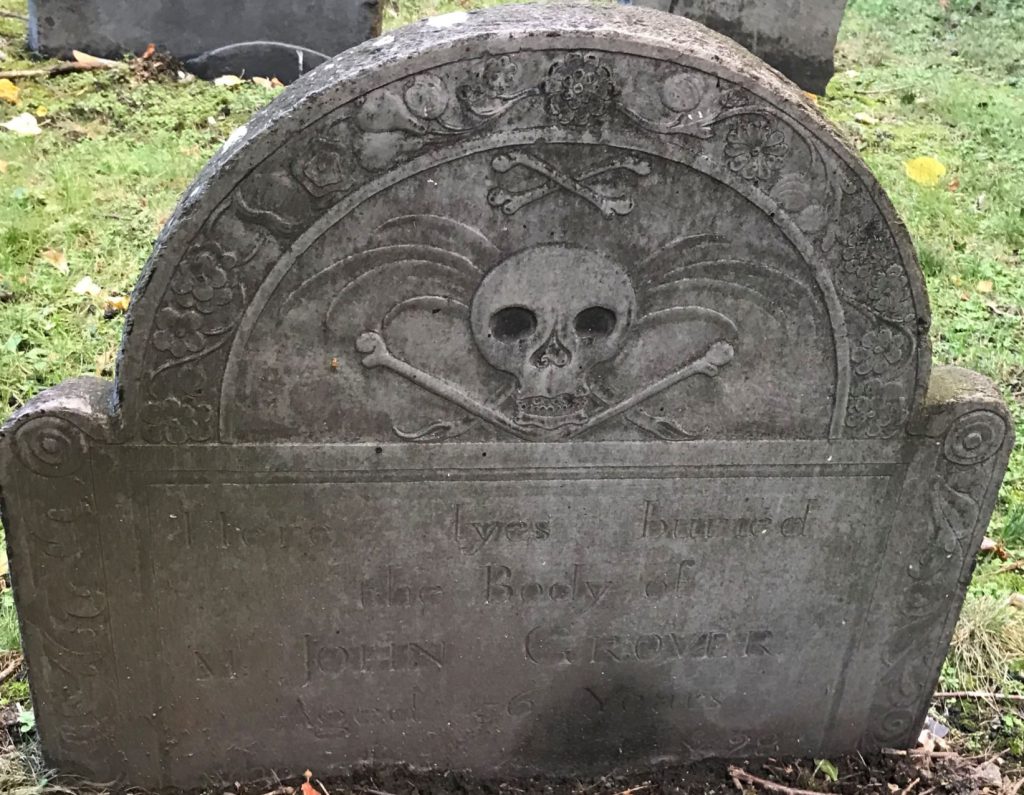
Skull and Cross Bones
A symbol of mortality or death. A visual for Memento Mori–Remember death.
John Grover, King’s Chapel Burial Ground, Boston, Massachusetts
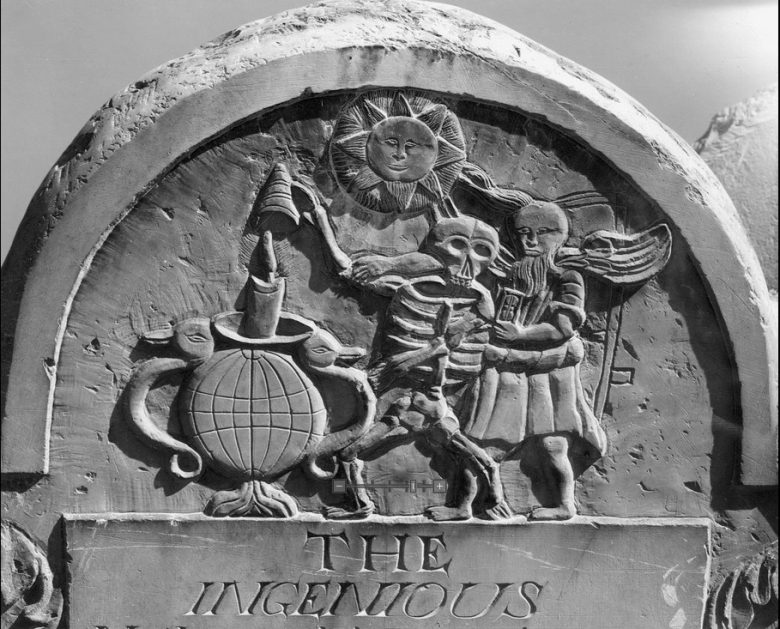
Sun
John Foster, Dorchester, Massachusetts, Courtesy American Antiquarian Society.
The sun is a symbol of life. John Foster was a fan of astrology, so this sun was thought to represent his interests.
Courtesy American Antiquarian Society
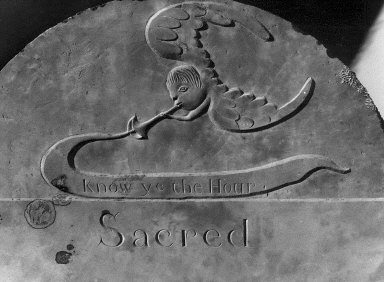
Trumpet
The trumpet is a symbol for resurrection– the trumpet shall sound and the dead shall be raised incorruptible.
Deacon Samuel Ford,
Nequasset Cemetery, Woolwich, Maine
Courtesy American Antiquarian Society
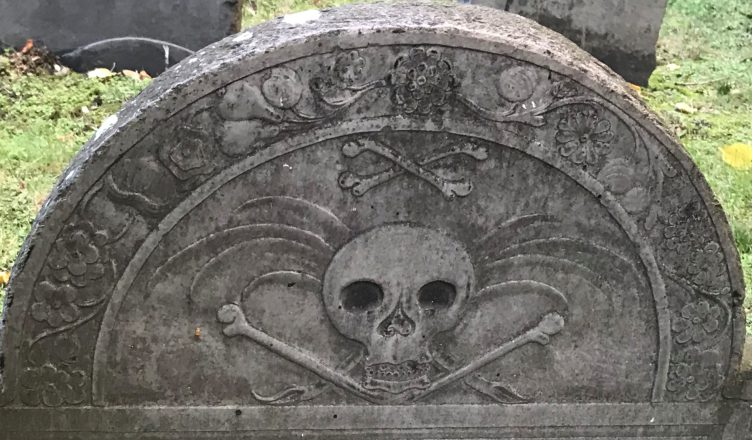
Interesting! Thanks for your comment.
Thank you for this insightful blog Kim. The image used here of the Susanna Jayne marker from Marblehead is not unusual, I’ve seen other markers there with a skeleton Death, but from my reading\understanding Death is holding the sun and moon, not the earth. One such famous marker in Marblehead was defaced several centuries ago, the moon was chipped off because it was attributed to witchcraft.